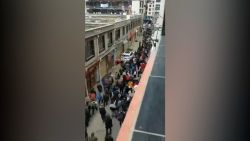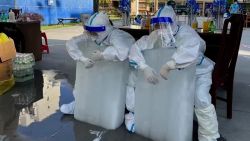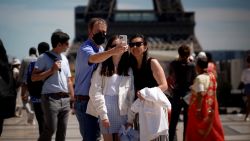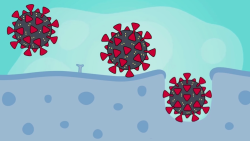A version of this story appeared in the May 15 edition of CNN’s Coronavirus: Fact vs. Fiction newsletter. Sign up here to receive the need-to-know headlines every weekday.
With hundreds of millions of Americans wondering how they will be able to return to their lives safely as states begin reopening, the US Centers for Disease Control and Prevention has released “decision trees” meant to help with that calculation.
But in the sparse six pages of advice — published after the agency’s first draft was rejected by the White House — the CDC offers up little in the way of safety guidance for schools, businesses and mass transit systems grappling with what is effectively a life-or-death choice.
Instead, the documents posted on the CDC’s website put the onus on state governments, while advising employers to encourage social distancing, handwashing and intensified cleaning. They do not provide any direction on when it would be safe to open up shop — only questions to ask before doing so.
The US has now tested more than 10 million people for the virus amid weeks of persistent delays. But yesterday, President Donald Trump wondered aloud whether such volume was even necessary, calling testing — one of the key tools to restart the economy safely — “overrated.”
“If we didn’t do any testing we would have very few cases,” Trump posited.
At 10 p.m. ET on Friday, Don Lemon and Van Jones will host “The Color of Covid,” a conversation about the devastating impact of the coronavirus on people of color. Samuel L. Jackson, Mario Lopez, Common, Alfre Woodard and others will offer their messages of hope.
YOU ASKED. WE ANSWERED
Q: What will eating in a restaurant look like during the pandemic?
A: Michelin-starred meals via delivery. Instagram Live cooking demos. Gourmet boxes from community supported agriculture. While the restaurant industry has proved nimble in finding new ways to stay afloat with dining rooms closed, they now face another challenge: how to maintain health and safety when they reopen. From acrylic glass barriers to antibacterial dispensers, staggered seating to disposable dishware, here’s what the new normal of eating out might look like.
Send your questions here. Are you a health care worker fighting Covid-19? Message us on WhatsApp about the challenges you’re facing: +1 347-322-0415.
WHAT’S IMPORTANT TODAY
Test used by White House may be inaccurate
The US Food and Drug Administration has issued an alert about “possible accuracy concerns” with the Abbott ID Now coronavirus test, a rapid point-of-care test that is used by the White House.
The device can return results in less than 15 minutes, but recent studies have raised concerns over the test’s accuracy — suggesting that it may provide an unacceptable number of false negatives, indicating somebody doesn’t have the virus when they do.
Social distancing during a natural disaster
People in the Philippines who have evacuated their homes to shelter from a typhoon still need to follow social distancing in evacuation centers, according to the state-run Philippine News Agency. Typhoon Vongfong made landfall around noon local time yesterday — forcing the evacuation of tens of thousands of people in a country under coronavirus lockdown.
What it’s like when an entire country reopens
After a week with no new cases, Vietnam eased its 22-day social distancing initiative, allowing some businesses to reopen on April 23.
Signs of life had already begun to emerge the prior day. Honking from the streets grew louder, while shopkeepers swept the sidewalk in front of their stores. Domestic tourism is resuming as well, as airlines increase flights and hotels reopen. Yes, everyone is wearing masks out in public, and only about 75% of businesses have reopened, but the capital feels back to its pre-coronavirus self, Katie Lockhart writes from Hanoi.
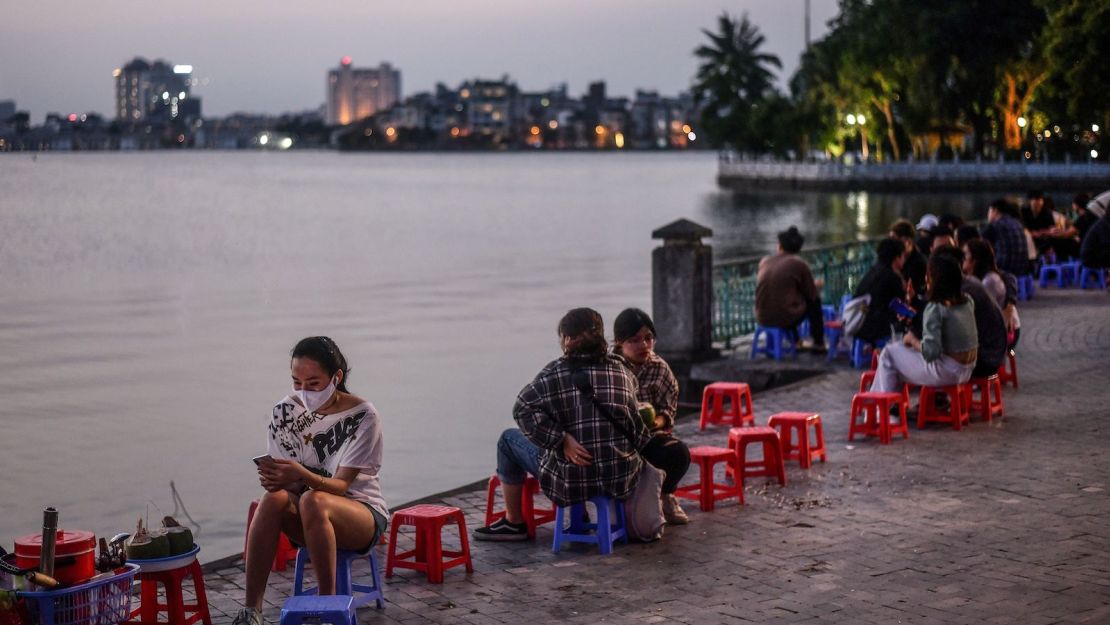
Fears of second wave in China
Wuhan, ground zero for the pandemic, reported 11 new asymptomatic cases today, according to the central Chinese city’s Municipal Health Commission. An ambitious screening program that aims to test all 11 million Wuhan residents is underway.
Meanwhile, production at China’s factories is growing for the first time since the pandemic began, but there are still major challenges ahead.
Uganda transport ban traps women with abusers
Seconds after Veronica opened her eyes in the hospital, she knew who had put her there. The night before, the mother-of-five was buying medication for her children in a town in northeast Uganda. When she returned home, her husband picked up a sharp object and stabbed her in the right eye.
Many women, like Veronica, have found themselves trapped with abusive partners since Uganda’s lockdown went into place. Critics say a transport ban also means they are unable to travel to seek medical treatment, Louise Donovan writes.
Singapore’s great coronavirus divide
In its initial wave of widespread testing, Singapore appears to have missed one key community group: migrant workers. The virus has spread like wildfire in the crowded dormitories where many of them live. Now, tens of thousands are infected. As the rest of the country prepares to slowly resume normal life, migrant workers remain locked down in their cramped living quarters until June 1.
ON OUR RADAR
- A San Francisco church is suing Zoom after one of its bible study classes was allegedly infiltrated by a hacker who bombarded the video call with porn.
- McDonald’s is going to look a lot different when it reopens: stickers on the floor encouraging social distancing, the closure of self-serve beverage bars and masked workers asking you to step away from other customers.
- Grocery prices are soaring. Here’s what’s getting more expensive — and why.
- The Spanish island of Mallorca will welcome a limited number of travelers in late June in a “pilot project” to restart tourism.
- German soccer is returning this weekend, but not as we know it.
TODAY’S TOP TIP
From full-on buzz cuts to painstaking trims, many people have been forced to tackle their own manes during lockdown. Last month, model Bella Hadid joined in when she shared her attempt on Instagram of one of the riskiest DIY haircuts: bangs.
Of all the hairstyles, few are as instantly transformational as snipping bangs (called a “fringe” in the UK and other parts of the world), which can instantly frame your face in a whole new way. Samantha Tse turned to celebrity hair stylist Garren for tips. Watch his painstaking tutorial here.
TODAY’S PODCAST
“I think Americans do have to be … very careful that we’re not building surveillance that isn’t going to work, or that we’re stuck with surveillance infrastructures that are going to haunt us after the crisis is over.” — Jennifer Granick, ACLU surveillance and cybersecurity counsel
Mobile apps, QR codes, facial recognition. Are we heading towards a Big Brother surveillance state? CNN’s Chief Medical Correspondent Dr. Sanjay Gupta asks health and privacy experts about the role of technology in our ongoing battle against Covid-19. Listen Now.





